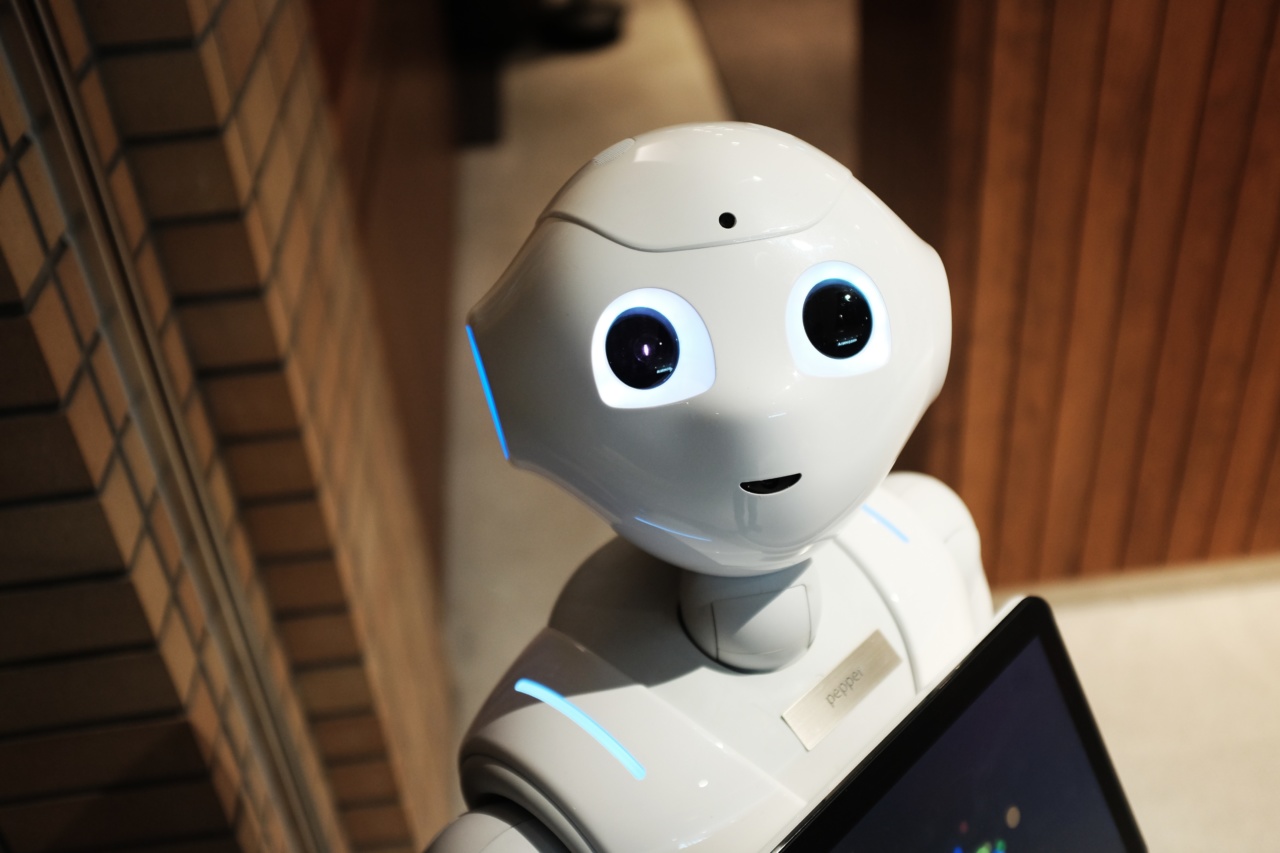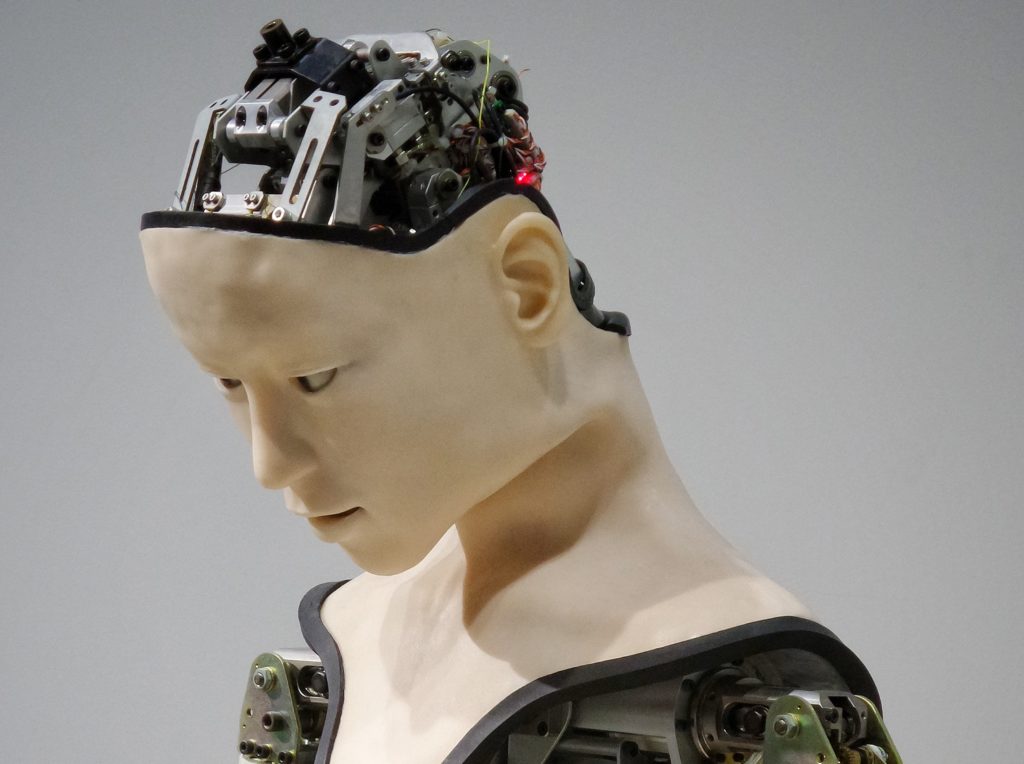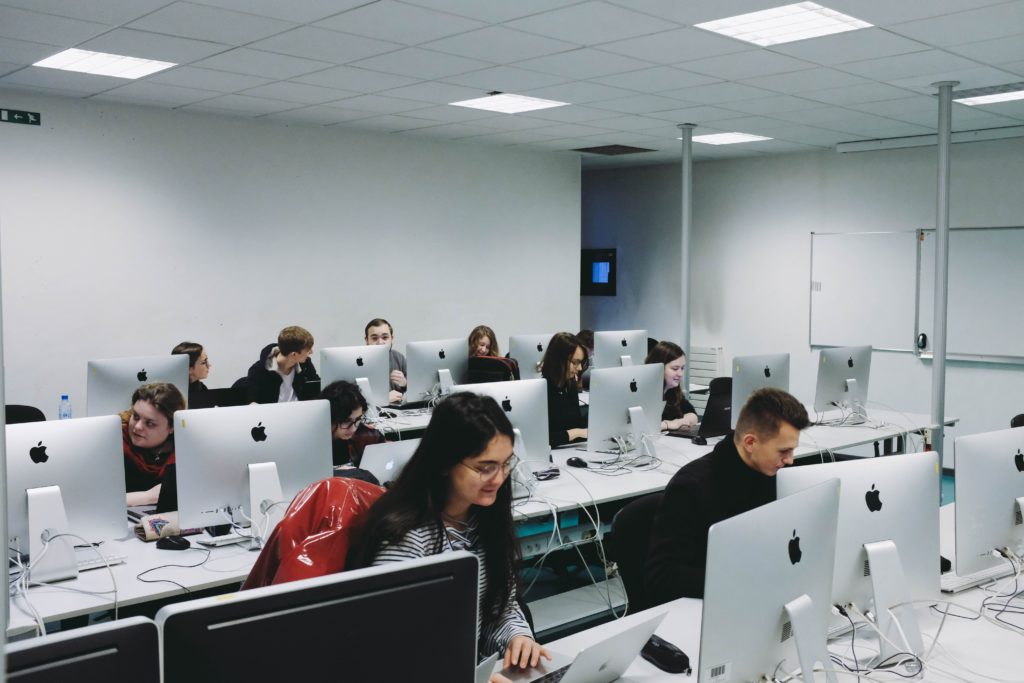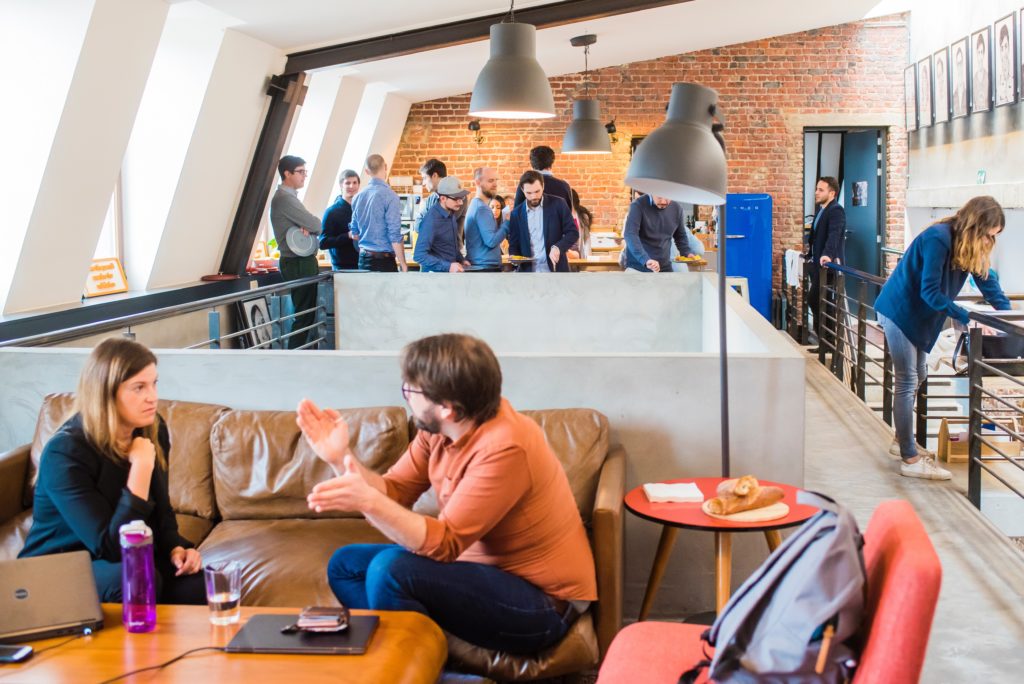Is the digital workplace a hidden threat?

The digital workplace is easing our day-to-day work in the office but does automation come at a cost?
We’ve become accustomed to streamlined processes, the automation of repetitive jobs, and easier ways of communicating. But there is growing concern that the increasingly capable machines we use every day could be the kiss of death for the office worker.
As the workplace has evolved, fears have been expressed over how automation could destroy industries, pushing countless workers out of their jobs in the quest for quicker, cheaper, less complicated methods. While the man versus machine debate has been chewed over, a digital transformation has taken over our workplaces, slowly creeping into the everyday jobs that we do.
Finding shortcuts, on the surface, is great. We can bypass repetitive jobs, skip scouring files of paperwork, and touch base with colleagues anywhere in the world. The digital workplace has been an essential development in offices all over the world.
But at what expense?
Are robots, AI, and digitalization slowly phasing out our jobs? Could we all be victims of a takeover? Will we soon be facing a jobless economy?
Why robots will not take over our jobs

Whenever there’s fear-mongering, it’s always a good idea to check in with what is happening. While it’s easy to conclude that, one day, the planet’s population will be substituted by computers, research suggests that technology, automation, and transformation could not only be making things better for the average worker, they could also be increasing the job market by creating new industries, innovations, and development.
With driverless cars, retail chatbots recommending the right cut of jeans for us, and fridges alerting us to gone-off milk – we are living in exciting times. Technology and innovation have seen a definite spike in the past 15 years, where now our workspaces are very much digitalized. But despite the intoxicating thrill of new gadgets and experiences, there is also the unease that more and more jobs will be lost as technology takes over. Combine this with an increasing realization that there is no clear idea of what tasks will be automated, and there is a low-level panic across the workforce.
We have been here before, of course. There was similar anxiety in the 18th and 19th century, during the Industrial Revolution. This period marked a shift to powered, special-purpose machinery, factories, and mass production in the textile and iron industries. Moving labor out of the homes and into factories, replacing hand tools for special purpose machinery, and the transformation of agrarian society into urban sprawls created hysteria among the populace. The Luddite uprising, protests on working conditions and a fear that machinery was taking jobs away from the working class were all born from this paranoia.
Sound familar? A comparable foreboding is happening now. As the automation of machinery is creeping in, there are generations of people isolated from the digital age, multi-billion-dollar organizations criticized for dangerous workplace conditions and a growing fear over our vulnerability to computerization… But how scared should we be?
How the 19th century holds lessons for the 21st century

If we are to look back at the 18th century, we can see similarities to the present day. The Industrial Revolution was a gigantic, messy behemoth whose transformation eventually brought about relative harmony. But during the thick of it, the transition had many negative impacts. Unskilled workers had little job security, labor was often very dangerous, and wages for many factory workers were low. These conditions eventually prompted labor reform and the formation of trade unions. But despite fears of mass unemployment, it became increasingly apparent that technological progress was benefiting all sections of society, including the working class. Concerns over the negative impact of innovation diminished and the Luddite movement was declared a fallacy. It was an inevitable shift that left some ruin in its wake but rolled ahead thanks, in no small part, to the onward march of free enterprise.
Could the same thing happen in the 21st century?
From a cynical vantage point, it’s easy to list off the advantages that machines have over humans. “They’re always polite, they always upsell, they never take a vacation, they never show up late, there’s never a slip-and-fall, or an age, sex, or race discrimination case.” Opinions like this, from the then-chief executive of restaurant chain Hardee’s Food Systems Inc have given workers reason to worry that a jobless economy is on the horizon. Get a robot who can competently do a job, and you have a human being on the scrap heap, correct?
Building a connected digital workplace
Not quite, argues the World Bank’s World Development Report 2019, who puts forward the notion that while automation displaces workers, technological innovation creates more new industries and jobs on balance. Robots ARE replacing workers, but technological change is also creating millions of jobs. The case is that while the workforce will need to shape themselves around the technological changes, the advantages are plenty.
While it is important not to be dismissive of people’s fears over a jobless economy, it’s also necessary to mention that its impact is, at the moment, unquantifiable. There are no definitive sources that provide accurate figures on the reach and effect of automation.
According to the report, job automation estimates in Bolivia range from two to 41 percent – so between 100,000 and two million jobs could be automated. In Japan, guesses on those roles thought to be at risk range from six to 55 percent.
Such discrepancies don’t really provide any insight into automation’s threat to employment. Conversely, there is more information on how computerization can create massive growth in the job market.
The ebb and flow of job roles in the digital workplace

Take the digital workplace, for instance. The traditional office has changed dramatically over the past fifty years. Gone are the typing pools, secretaries, and bullpen organization. Now, the office is shaped around the various requirements of its people – whether it’s remote workers, freelancers, contractors, or permanent staff.
Digital transformation has seen a gradual reduction in some jobs in the office environment. On some micro level, we can relate it to what is happening on a broader scale. Automation is happening across the board, from admin to accounting and IT to HR. While it has been slow and steady: the introduction of computers, then the dawn of the internet, then readily available free software – the difference between a 1990s office and the 21st-century office is the difference between night and day.
Have we suffered? No. The only real change is those young workers coming into the office have had to alter their skills, but as digital nomads, this has happened very naturally. We’re now no longer trained in using ledger paper for accounts, or traditional draughtsmanship, we have software to do it for us. However, the people who do those roles are not out of work. They’re controlling the software and advancing their skills in other areas. Automation and computerization have made things easier, more scalable, quicker, more productive. It has also, according to research, made us happier.
Building a connected digital workplace
In The Right Technologies Unlock the Potential of the Digital Workplace, a study that included 7,000 employees across 15 countries, it revealed a clear chasm in employee performance and sentiment between more advanced digital workplaces and those that employ digital technology to a lesser degree. There were several points that came through:
Beyond productivity, digital tools unlock human benefits: “Digital Revolutionaries” – employees identified as those who work in fully-enabled digital workplaces where new workplace technologies are in widespread use – were 51% more likely to have strong job satisfaction, and 43% more likely to be positive about their work-life balance than “Digital Laggards” – those who have less access to workplace technology. The Revolutionary employees were also 60% more likely to say they are motivated at work, and 91% more likely to praise their company’s vision.
Digitalisation also underpins professional development: the report highlighted how 65% of Revolutionaries stated that the use of digital technology actively boosts professional development and growth, as opposed to just 31% of Laggards. And when it came to developing staff, 72% of Revolutionaries reported a higher ability to adopt new work skills compared to 58% of Laggards.
Digital technology increased quantifiable productivity gains: 73% of Digital Revolutionaries reported a positive impact on their productivity and 70% cited improved collaboration thanks to digital technologies, vs. 55% of laggards.
How technological advancements create better workplace experiences: Automation may well be perceived as a threat to job security. However, the research found that there was widespread enthusiasm for it. When it came to creating a fully automated workplace in the future to allow organizations to build smarter, more effective working environments, 71% of respondents said they would welcome such a development.
Besides boosting productivity, the digital workplace also offered human benefits: those employees who work in fully-enabled digital workplaces where new workplace technologies are in widespread use, aka “Digital Revolutionaries,” were 51% more likely to have strong job satisfaction. They were also 43% more likely to be positive about their work-life balance than the “Digital Laggards,” those workers who have less access to workplace technology.
Where the worker and the workplace meet

From what we have seen, technology and automation aren’t about replacing jobs. They are helping us move towards a human-centric workplace. Workers aren’t just shaping themselves to the organization as tradition dictates, but now the organization is meeting the expectations of its workforce too.
The average office can contain four different generations – the most generations ever to coexist in the workforce. Organizations know that in order to get the best out of each individual, they must accommodate work styles to fit the different ages and personalities.
“No matter the industry, we’re seeing a move toward human-centric places as enterprises strive to meet rapidly changing expectations of how people want to work. This depends upon combining advances in technology — which includes furnishings — with the cognitive sciences to help people engage with work in new ways. This will not only mean singular, premium experiences for individuals, but also the opportunity for organizations to attract and retain the best talent.”
Joseph White, Director of Workplace Strategy, Design and Management, Herman Miller.
As well as using space correctly, and getting in the right furnishings, their challenges include successfully using tech to help people engage in different ways and creating optimal experiences for their people while attracting retaining the best talent.
“The very nature of the term “workplace” is being transformed, as companies begin to realize that effective space is experience-centric, and must accommodate work styles spanning generations and personality types. This ushers in new processes where IT solutions, building systems, and furnishings interact harmoniously with humans to create such spaces. Regardless of your enterprise’s specific situation, when spaces become active participants in the user experience it benefits the bottom line. After all, workers who feel comfortable in a space get their tasks done. Those who don’t will eventually move on to a more inviting option.”
Francisco Acoba, Managing Director for Deloitte Strategy & Operations.
The evolving workforce

Technology is changing the skills being rewarded in the labor market. So while we are seeing a decrease in manual labor, routine jobs and anything that can be automated, other skills are deemed as safe, i.e., general cognitive skills such as critical thinking and sociobehavioral skills such as managing and recognizing emotions that enhance teamwork are for the moment, not replicable by robots. Data entry clerk jobs are likely to see a decrease; a computer can load, file, and sort information in an instant. On the other hand, an occupational therapist who treats, supports, and assesses individuals at work, has skills unlikely to be replicated by robots alone. Individuals possessing these types of skills are more adaptable to changes in the market, they can modify their expertise to other industries.
And ultimately, while we know that technology does and will eliminate jobs, we don’t have any way of knowing the variance –we simply cannot predict where technology will take us. Similarly, we also do not know how many new jobs and careers will be spawned by technology. And the generations entering the workforce have realized that in order to remain afloat, they need to be adaptable, committed to continual training and education and ready to update skills regularly.
As the research shows, the digital workplace highlights how the business and human benefits of more digitally-driven workplaces outweigh any inherent risk. Those companies who are less technologically advanced are at risk of falling behind the competition and not attracting top talent. In short, standing in the way of inevitable technological developments will be detrimental to your workers and your business.

